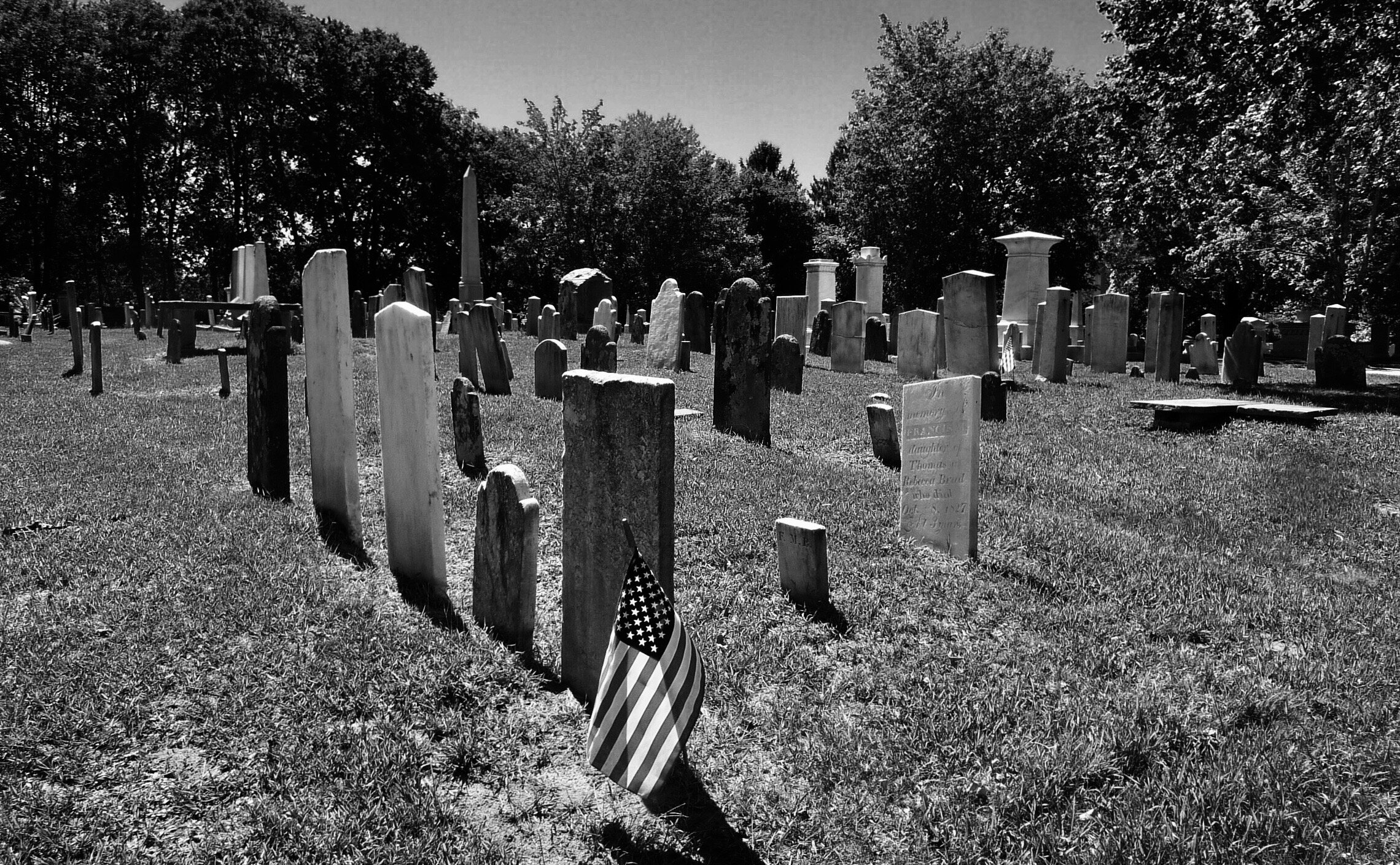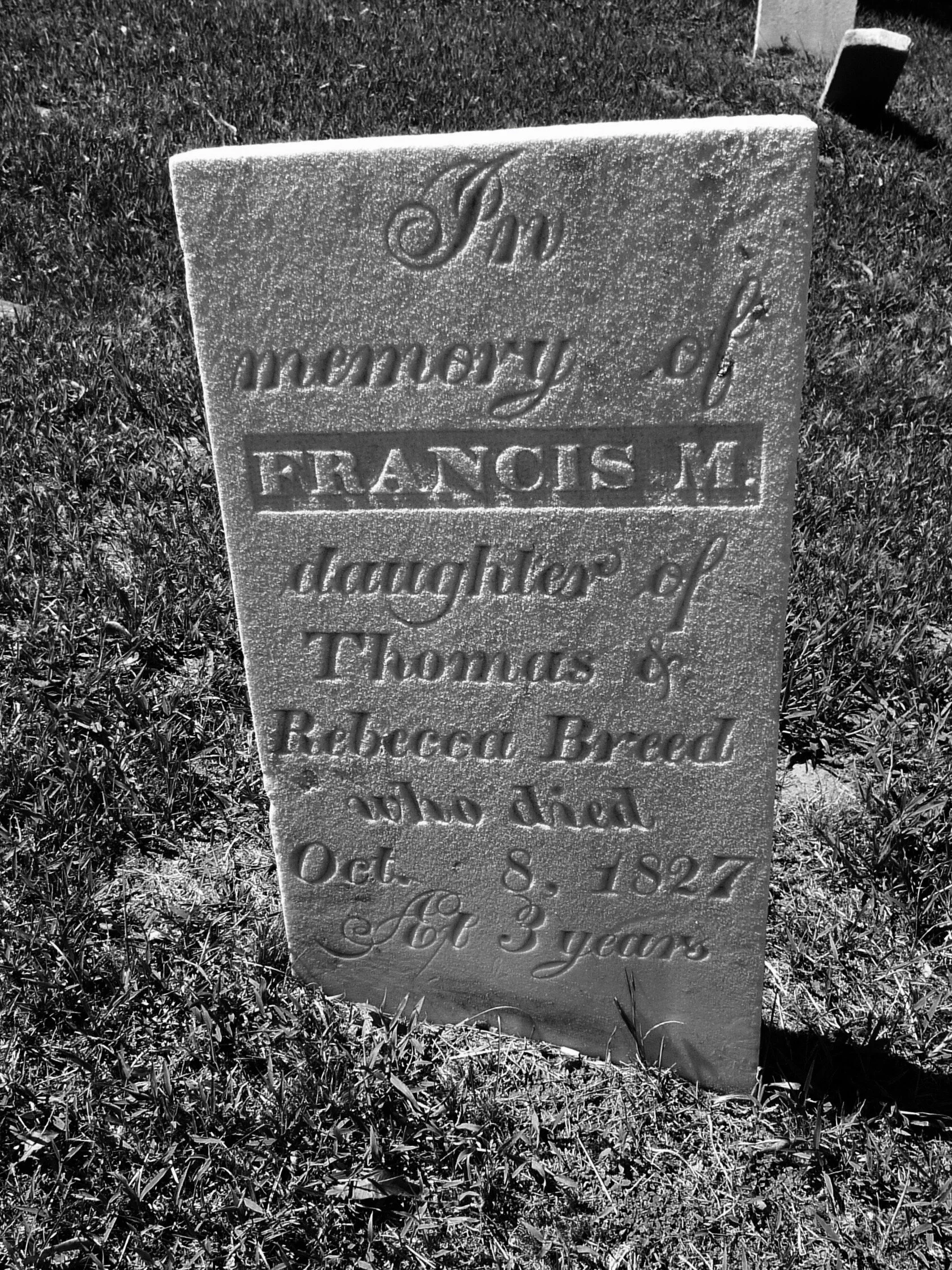William Morgan: When so many deaths were early
The Stonington Cemetery, in Stonington, Conn. The first burial in it was in 1754, with the interment of Thomas Cheseborough.
Francis Breed was three when she died, in 1827. The stone carver had a penmanship flourish.
Stand in any old New England cemetery and you’re surrounded by premature death. Living along New England's rocky shores in the 18th and 19th centuries meant a constant range of childhood diseases, some spread in pandemics, such as measles, diphtheria and smallpox, if mother and infant survived childbirth, and the other maladies and dangers that often made life brutal and short.
Within a radius of a dozen feet in this handsome necropolis just north of Stonington Borough, there are several reminders of loss in a pre-vaccine world.
Samuel and Alzayda Robinson's son William left this life at 18 months, but with no fancy inscription, just simply: “DIED’’.
Charlotte Augusta Staples, aged one year and seven days, had the same carver as William Robinson nearby, but here with this inscription:
“Happy infant early blest/
Rest in peaceful slumber rest’’
Captain Joseph Eells, born in 1768, got a 19th-Century stone. Perhaps Eells was lost at sea.
Saddest of all, Lydia Palmer was a young wife when she she died (giving birth?) at only 18. Her weeping willow, carved in porous sandstone, is eroding. The inscription here reads:
“Behold & see as you pass by,
As you are now so once was I,
As I am now so you must be,
Prepare for death & follow me.’’
William Morgan is a Providence-based architectural historian and essayist. His latest book, Snowbound: Dwelling in Winter, will be published next month.





